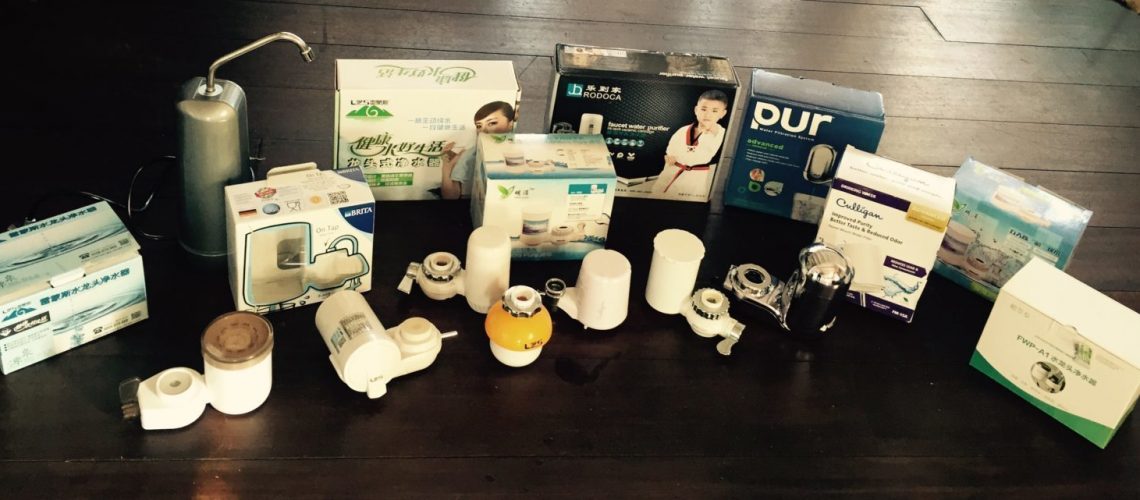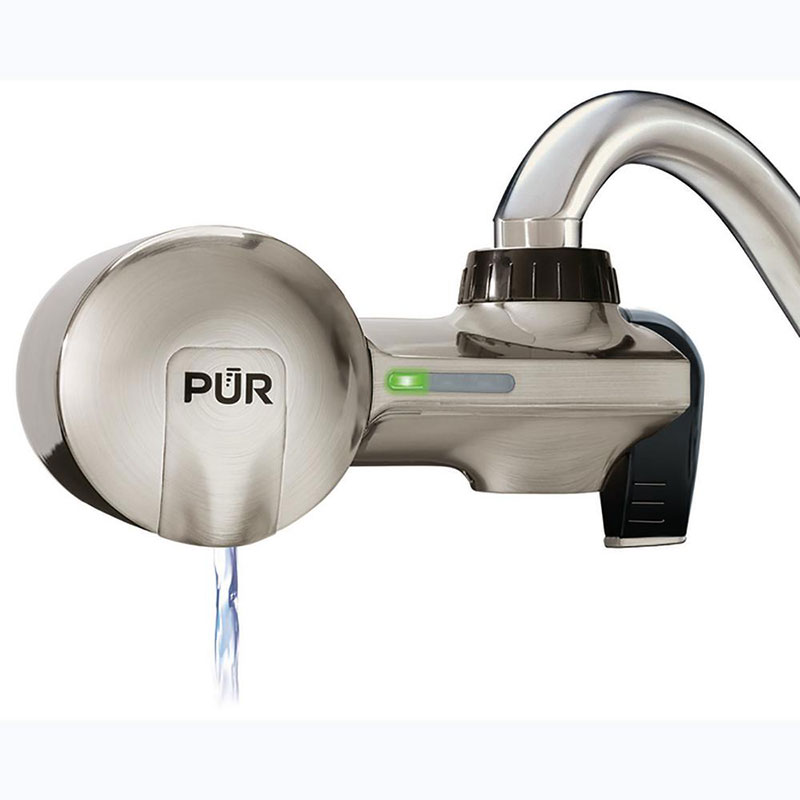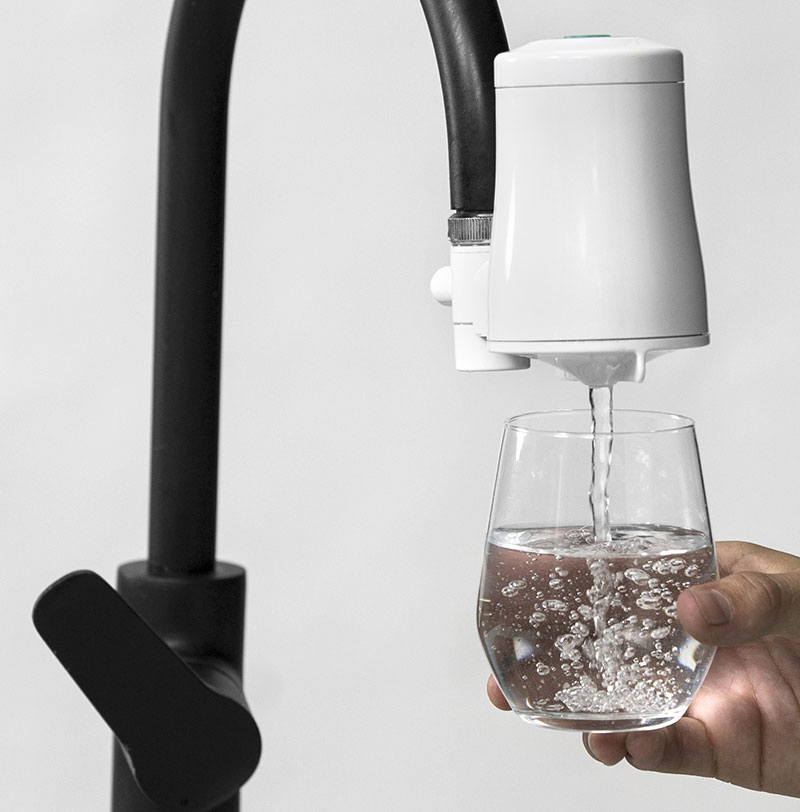
PUR, Culligan, ZeroWater, TAPP, Brita Faucet Water Filter Comparison
- November 20, 2018
- , 9:04 pm
1. Design and quality
- PUR ultimate horizontal water filter designed to look like stainless steel is overall slick and robust
- TAPP 2 Scandinavian design is white with beautiful rounded lines making it look good on almost any faucet
2. Filtering capabilities
- BRITA complete faucet system removes 60 contaminants including 99% of Lead
- PUR Ultimate Horizontal Water Filter removes 70 contaminants including 99% of lead
- Culligan FM-15A reduces cryptosporidium, giardia cysts, lead, chlorine, atrazine and other items that produce bad tastes and odors
- Zerowater water pitchers claim to reduce total dissolved substances (TDS) to zero including chlorine and lead. This means that it removes all minerals including a the healthy ones from the water.
- TAPP 2 removes 80+ contaminants including microplastics, chlorine, chloramine and 99% of lead
3. Water flow filter comparison
- Brita, PUR and ZeroWater pitchers 0.25 gallon / min
- PUR Ultimate Horizontal Water Filter – 0.5 gallon / min
- Brita Complete Faucet System – 0.5 gallon / min
- Culligan FM-15A – 0.5 gallon / min
- TAPP 2 – 1 gallon / min
4. Ease to install and faucet fit
- PUR Ultimate Horizontal Water Filter – clear manual and easy to install on standard faucets with an extra adapter kit that can be ordered by paying for the shipping cost. Our experience was that it leaked on most faucets due to the plastic faucet attachment.
- Brita Complete Faucet System – easy to install on standard faucets but our experience was that the filter leaked almost every time due to the plastic faucet attachment.
- Culligan FM-15A – easy to install on all standard faucets with a robust stainless steel faucet attachment adapter causing minimal leakage
- TAPP 2 – easy to install on all standard faucets and many others thanks to a large set of extra adapters. We experienced no leakage thanks to the stainless steel faucet connector.
5. Cartridge material and disposal
- Brita pitchers as they use activated carbon and ion exchange as well as have a filter recycling program
- Zerowater pitchers that also include ion exchange
- TAPP 2 that uses cartridges made of biodegradable materials and organic coconut activated carbon resulting in zero plastic residue and no plastic in the water
6. Filter cartridge / refill replacement
- PUR, Brita and Zerowater pitchers – All of these had a LED light measuring the time from the last replacement with a light indicating that it needs to be replaced. The replacement time is 1 month no matter how much or little you use it.
- PUR and Brita Faucet Filters with light indicators measuring time with a replacement rate every 2-4 months independent of usage
- Culligan faucet filter has no light indicator. Instead the cartridges are recommended to be replaced every 100 gallons of use.
- TAPP 2 offers two alternatives including a smart monitoring solution based on usage and time and a manual calendar to set the replacement date. It’s recommended to change the cartridges at least every 3 months even though the capacity is 250 gallons.
7. Yearly cost Faucet Filter Comparison
Summary Faucet Water Filter Comparison
Criteria
PUR Faucet Filter
Brita Faucet Filter
Culligan Faucet Filter
ZeroWater Pitcher
TAPP 2 Faucet Filter
1. Design
Stainless Steel Look
Plastic
Plastic
Plastic
White Scandinavian Design
2. Filtering capability
70+ Contaminants incl Lead
60+ Contaminants including lead
Cryptosporidium, giardia cysts, lead, chlorine, atrazine and other bad tastes and odors
Reduce total dissolved substances (TDS) to zero
70+ contaminants incl microplastics and lead
3. Water flow
0.5 gallon/min
0.5 gallon/min
0.5 gallon/min
0.25 gallon/min
1 gallon/min
4. Ease to install
Easy for standard faucets
Easy for standard faucets
Easy for standard faucets
No installation
Easy for standard faucets with free adapeters
5. Cartridge material
ABS plastic
ABS plastic
ABS plastic
ABS plastic
Biodegradable plastics
6. Filter replacement
Every 2-3 months LED indicator
Every 2-3 months LED indicator
Every 2 months
Every month
Every 2-3 months with MyTAPP monitoring and notifications
7. Annual cost estimate
$114 per year
$76 per year
$90 per year
$180 per year
$60 per year
|
|
Share this post









7 thoughts on “PUR, Culligan, ZeroWater, TAPP, Brita Faucet Water Filter Comparison”
Actually, this is incorrect information on filter replacement for the ZeroWater. It says right on the package and/or instructions to replace the filter when the TDS meter reads 006. Mine has lasted over one year, so depending on your water quality the ZeroWater filter probably does not have to be replaced monthly.
The information Re the ZeroWater pitcher is incorrect. It was stated that the filter should be replaced monthly regardless of how much or how little it is used. This is wrong. The pitcher comes with a meter that measures the state of the filter and when it should be replaced. There is no fixed time limit on the filter, only the meter reading. This incorrect information grossly distorts the cost comparison of the filter.